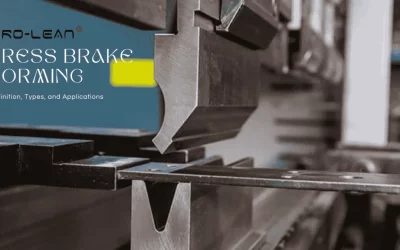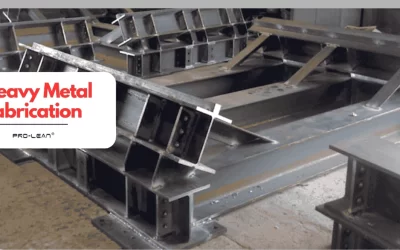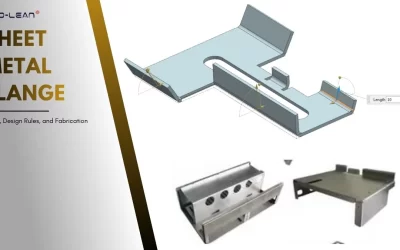Comparing Cost-Efficiency: Traditional Manufacturing Vs Online Platforms
One of the most critical factors for businesses when selecting a manufacturing method is cost. Traditional manufacturing, while effective for large-scale production, can be prohibitively expensive for smaller businesses or for products with low-volume demand. The significant upfront costs associated with machinery purchase and maintenance, labor, and operational overheads can eat into profit margins. Furthermore, wastage and the cost of storing excess inventory can add to the total production cost.
On the other hand, online manufacturing platforms often require lower initial investment. As they operate in a digital environment, the need for physical infrastructure is minimized. These platforms leverage economies of scope rather than economies of scale, meaning they can produce a wider variety of products in smaller quantities more cost-effectively. This is especially beneficial for startups and small businesses that require prototyping services or short-run production.
Table 1: Cost Comparison between Traditional and Online Manufacturing
| Factor | Traditional Manufacturing | Online Manufacturing |
|---|---|---|
| Initial Investment | High (Machinery, Infrastructure) | Low (Mainly technology investment) |
| Operational Costs | High (Staff, Maintenance) | Variable (Based on service usage) |
| Inventory Costs | High (Storage and wastage) | Low (On-demand production) |
| Economies | Scale | Scope |
Flexibility and Customization: Digital Advantage
Traditional manufacturing excels in producing large quantities of the same product. However, this comes with a significant limitation: flexibility. Once a production line is established, making changes to the product design or manufacturing process can be time-consuming and costly. This makes traditional manufacturing less suitable for products that require frequent design changes or customization.
In contrast, online manufacturing platforms offer a high degree of flexibility. With technologies like CAD software and CNC machines, designs can be adjusted in real time, and the changes can be immediately implemented in the production process. This flexibility makes online platforms a better choice for businesses that require customization or have products with shorter life cycles.
Scalability: Traditional Vs Online Manufacturing
Traditional manufacturing usually requires an increase in production capacity to scale up, which can involve significant costs and time. It also involves the risk of producing more than the market demand, leading to excess inventory.
Online manufacturing platforms, however, offer ‘scalability on-demand’. You can increase or decrease the production volume as per market demand without significant delays or upfront costs. It provides the opportunity to test the market with short-run production before investing in large-scale manufacturing.
These comparisons help businesses to align their manufacturing choice with their specific needs and strategic goals. As we move further into the digital age, online manufacturing platforms like Prolean’s on-demand services are becoming increasingly popular. Prolean leverages advanced technologies to deliver fast, flexible, and cost-effective manufacturing solutions for a wide range of industries.
Speed and Efficiency: Fast-Paced Online Manufacturing
In today’s fast-paced market, speed is a critical factor in staying competitive. Traditional manufacturing processes often involve a series of time-consuming steps, such as product design, prototype development, setting up the production line, and actual production. Moreover, any changes or iterations in the design lead to a restart of the whole process, leading to further delays.
Online manufacturing platforms, on the other hand, use advanced technologies like computer-aided design (CAD) and CNC machining to significantly reduce the time from design to production. Changes to the product design can be made in real time, without the need for time-consuming retooling. This enables faster product iterations, allowing companies to respond quickly to market changes.
Table 2: Time Efficiency in Traditional vs. Online Manufacturing
| Step | Traditional Manufacturing | Online Manufacturing |
|---|---|---|
| Design | Manual, time-consuming | Fast, using CAD |
| Prototyping | Requires separate process, slow | Integrated into the system, quick |
| Changes/Iterations | Slow, requires retooling | Fast, real-time adjustments |
| Production | Depending on scale, generally slow | Quick, flexible production capabilities |
Quality Control: Consistent Performance Online
Quality control is another crucial aspect where online and traditional manufacturing differ. In traditional manufacturing, quality control often relies on manual inspections, which can be error-prone and inconsistent. Also, addressing quality issues after production can be costly.
Online manufacturing platforms, however, often integrate quality control measures into their processes. For instance, computer-controlled machining ensures a high level of precision, and any errors can be immediately identified and corrected. This results in fewer defects and higher consistency in the final product.
Prolean’s On-demand Manufacturing Services: Embracing the Future of Manufacturing
As we have seen, online manufacturing platforms offer numerous advantages over traditional manufacturing in terms of cost, flexibility, speed, and quality control. Among these platforms, Prolean’s on-demand manufacturing services stand out for their commitment to harnessing the power of technology to deliver superior results.
At Prolean, we offer an extensive range of services, including CNC machining, 3D printing, and sheet metal fabrication, among others. Our platform enables you to move from design to production seamlessly, with real-time collaboration, fast turnaround times, and consistent high quality. By choosing Prolean, you’re not just opting for a manufacturing solution; you’re embracing the future of manufacturing.
Conclusion
The choice between traditional manufacturing and online manufacturing platforms depends largely on a company’s specific needs. While traditional manufacturing can be suitable for the mass production of standardized products, online platforms like Prolean provide a more flexible, efficient, and cost-effective solution for diverse product ranges, customization, and shorter product life cycles. As technology continues to advance, it’s clear that online manufacturing platforms represent the future of the industry.
FAQs
What is the key advantage of online manufacturing platforms over traditional manufacturing?
The primary advantages include cost-effectiveness, flexibility, speed, and consistent quality control.
Are online manufacturing platforms suitable for small businesses?
Yes, online manufacturing platforms are ideal for small businesses due to their low upfront costs, flexibility, and scalability.
Can online manufacturing platforms handle large production volumes like traditional manufacturing?
Yes, online platforms can handle both small and large production volumes efficiently.
How does Prolean ensure quality in its manufacturing process?
Prolean uses advanced technologies like CNC machining for precise production and integrates quality control measures into the manufacturing process.
Can I make design changes during the production process on an online platform?
Yes, one of the significant advantages of online platforms is the ability to make real-time adjustments to the design.
What services does Prolean offer?
Prolean offers a range of on-demand manufacturing services, including CNC machining, 3D printing, and sheet metal fabrication.




I just want to add my experience that ask for the virtual factory tour to get ideas about machining capabilities if you are outsourcing from online manufacturing platforms.
Sure, we would like to do that, drop your questions here and we will get back to you; https://proleantech.com/contact-us/